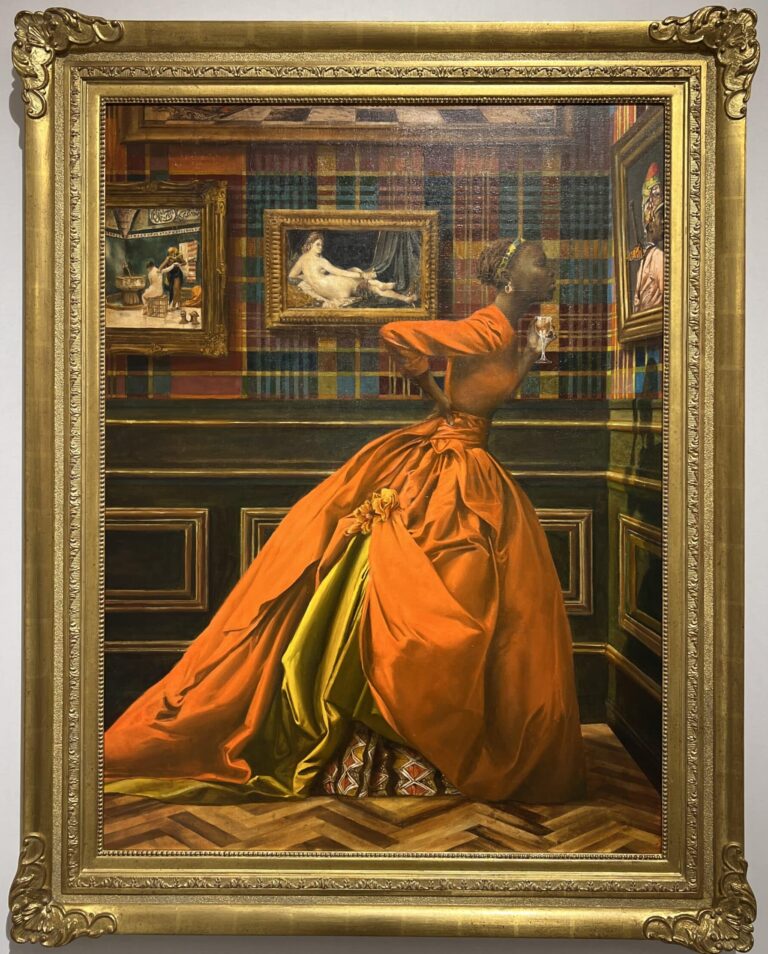Enjoying art is about falling in love, but collecting art means learning and engaging with a community. Making the decision to purchase fine art is an exciting, but daunting, process. Whether you are purchasing art through a gallery, at an auction, or online, there are several things to keep in mind as you navigate the sales process.
Tip 1: Buy what you love, but learn about it first.
Collecting art is a journey and an experience that enriches you.
The best art is that which keeps us returning to it over and over. It’s vital to explore your own tastes and interests when deciding to purchase art and to identify your passion. Resist pressure to conform to the art world’s latest trends and adopt “curious detachment” when considering “rising stars” in the market. Look at works that would normally fly past your radar as a way to re-affirm your tastes and proclivities.
What is informing your interest in the work? Does it resonate with personal beliefs, causes and passions? Is it probing issues to illuminate alternate ways of understanding? Is it pushing aesthetic and artistic boundaries? With motivations and interests identified and preferred periods, styles and mediums understood, a collecting strategy can start to be articulated.
Tip 2: Know who made the work.
The artist is the single most important variable in establishing value.
Who made a work of art determines not just the importance of the work, but also its merit as an investment. It is important to study the artist’s c.v. and bio to learn as much as possible about their background, training, exhibitions and sales histories.
In general, artists with formal training and institutional affiliations with either arts institutes or museums, are the most desirable artists to invest in. These artists will tend to produce works that have more reach and relevance within broader art practices. Artists who are included in museums and public galleries have already been selected by cultural leaders as significant and this therefore translates into investments that will bear over the long term.
Self-taught artists must be represented in public collections, in group or solo exhibitions at leading galleries, and ideally, they are included in critical art publications and catalogues.
Tip 3: Understand the difference between primary and secondary markets.
The art market is composed of the primary and secondary markets.
It’s important to understand the difference between the two markets, especially when it comes to doing due-diligence and understanding valuation. The primary market consists of sales that are made directly from the artist’s studio (and via their primary dealer) and works that have never been sold before. One of the advantages of the primary art market is that you are also getting primary pricing, an added incentive on top of acquiring work that is straight from the artist’s hands. You will also likely benefit from the work being in excellent condition.
The secondary art market refers to work that is being re-sold either on auction, through art dealers, or by art advisors through private sales. Unlike the primary market, these exchanges require added due diligence because the work will have a past and its condition, price, and exhibition history all need to be examined. Of particular importance is the work’s provenance: its history of ownership and inclusions in exhibitions and literature.
Secondary market due diligence includes questions such as: has the work been to auction? If so, how much did it sell for? What variables in its ownership history impact value (museum collection, celebrity ownership, or single ownership)? After artist significance, provenance is a foundation of value.
Tip 4: Understand the price.
Research price and learn about the valuation process.
Research the price and the existing market for the type of work you are interested in purchasing. Public auction records are partially accessible online (and fully accessible via subscription databases) and gallery and artist websites sometimes list prices. Market reports, when available, are particularly helpful in understanding the valuation process. Public sales records of previous works by the same artist, school, or movement can act as comparable sales.
The asking price reflects the unique provenance of the work and the more exhibitions and literature that a work of art has been included in, the higher the price will be against comparables. Celebrity ownership, inclusion in a preeminent institution, and inclusion in catalogues and books, all drive value up. Where applicable, the work of art should be in the catalogue raisonné or have a certificate by the recognized expert on the artist.
Last, be aware of fees associated with art sales, whether you’re purchasing from a gallery, auction house, or through a private art dealer.
Tip 5: Consider condition reports and future care.
Independent condition reports are recommended in secondary market sales.
An important part of the due diligence required when purchasing a work of art is the condition report, especially in the secondary market. It will define the physical needs of the piece, from conservation and framing to insurance. If you are buying in the secondary market, you’ll want to ensure the work has been properly cared for and maintained.
Whether buying for passion or investment – or both – protecting the work will ensure its longevity and future value. Collection management is mandatory for a new or established collection and it must address the specific needs of the work, be they conservation treatment, framing, insurance, storage, or cataloguing.



